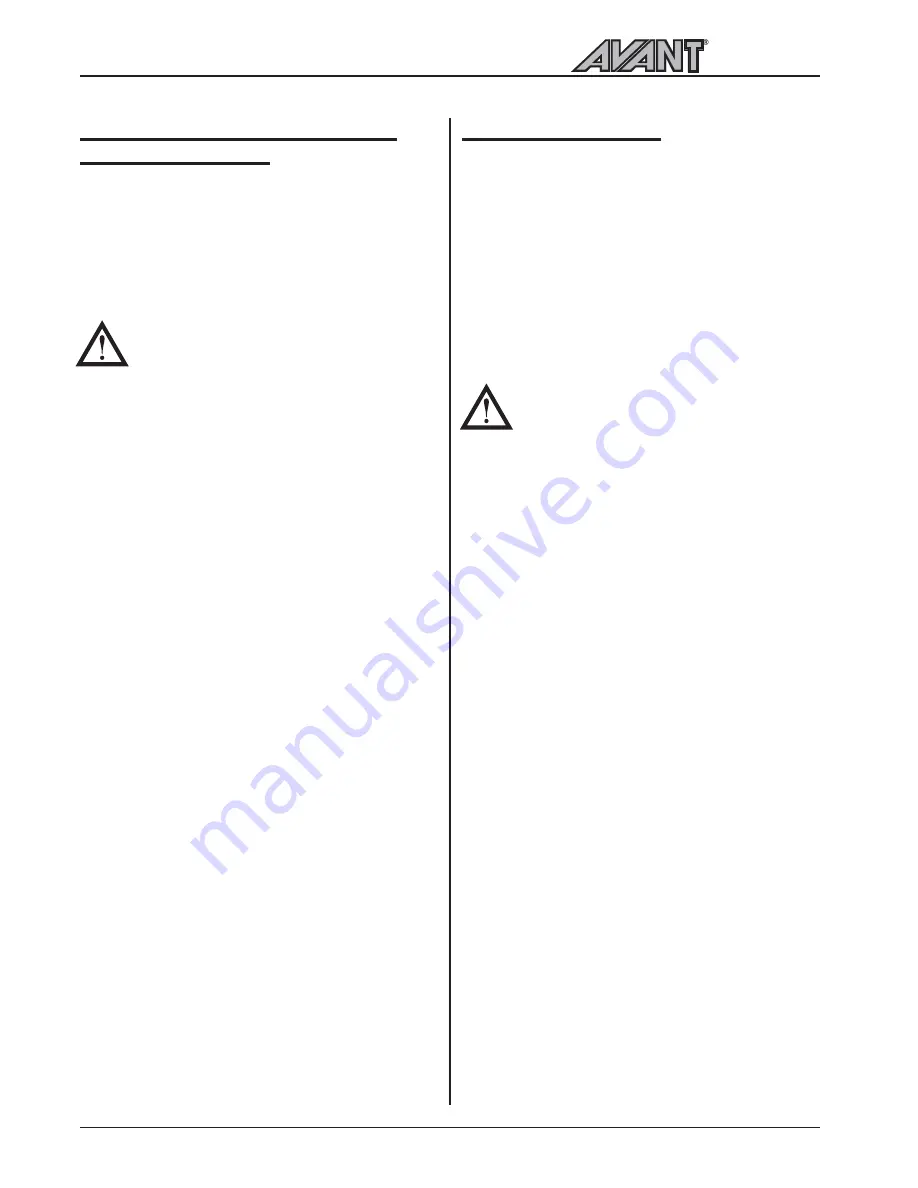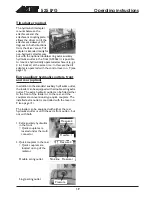
General information about LPG and
handling of gas bottle
Liquefied gas that is meant for internal combustion
engines in vehicle use (LPG, Liquefied Petroleum Gas,
also called autogas) is either purely propane or a
mixture of propane and butane, without any special
additives. This loader is designed to be equipped with
an 11 kg LPG bottle destined for vehicle use.
Please note that gas bottles that are intended
for heating or cooking cannot be used on
this loader. A normal cooking/barbecue gas
bottle is different, not only regarding the gas
valve but has also different internal piping
and function. Gas bottles that are made for
vehicle use have a special marking on them.
Do not use natural gas or any other gas that contains
methane (biogas EPG / CBG or CNG). In addition to
the differences in composition between the gases, the
working pressures and the gas systems themselves
can be very different. This loader is intended to be
used only with a gas bottle that contains liquefied
propane/butane for vehicle use. Using of other gases
can cause a dangerous situation.
We recommend to use a stainless steel gas bottle. Do
not use a steel bottle because of the eventual problems
that the internal corrosion of the bottle can cause.
There can also be problems when using a composite
bottle, because of eventual dirt that comes loose in
a composite bottle. In this case the filters in the gas
system must be replaced more frequently. In terms
of gas vaporization the type of gas bottle doesnt
matter, because in vehicle gas systems the gas is
vaporized with a separate device (vaporizer).
Filling of the gas bottle requires special equipment
and can therefore be done only by a person that has
been trained to fill gas bottles. Notice the inspection
year that has been marked on the gas bottle. The
bottle must be inspected that year in order that its
use can be continued.
Close the gas valve carefully, do not overtighten the
valve. Do not open the valve more than 2-3 rounds.
Gas bottle valve and gas hose normally tighten when
turning clockwise.
Store the gas bottle outdoors, in upright position,
protected from heat sources and direct sunlight. Install
the protective cap on the bottle when it is not in use.
Changing of gas bottle
Change the gas bottle in a well ventilated place,
preferably outdoors. Do not change the bottle when
the engine is hot, or in the vicinity of heat sources or
ignition sources. Never smoke near the gas bottle.
1. Stop the engine by closing the gas valve and letting
the engine run until the gas runs out in the piping.
Let the engine cool down. Close the gas valve
carefully and switch off main current.
2. Detach the gas bottle hose with a 30 mm key and
the tool that is on the hose. Opening direction is
normal (counterclockwise).
Make sure that dirt or water can not get on
the hose during changing.
3. Open the bottle fastening clamp, take off the bottle
and replace it with a new gas bottle, with gas valve
pointing down.
4. Connect the gas hose to the bottle by tightening it
first by hand so that the hose points straight away
from the loader. You can keep the hose position
correct by using the tool that is on the hose. Make
sure to tighten the hose properly, but do not
overtighten. If necessary, check tightness by using
soap-water liquid and make sure that the bottle
fastening clamp is fastened properly.
5. Open the gas valve slowly, about 2-3 rounds, so
that the protection valve doesnt switch on because
of too fast gas flow when the pipes are filled with
gas.
Vehicle gas is usually perfumed, in order that gas smell
can be recognised. Because of the perfume the gas
smells somewhat also in normal use. If the gas smell
is strong, do not start the engine. Find out the reason
for the gas leak.
Safety instructions
6
525 LPG























